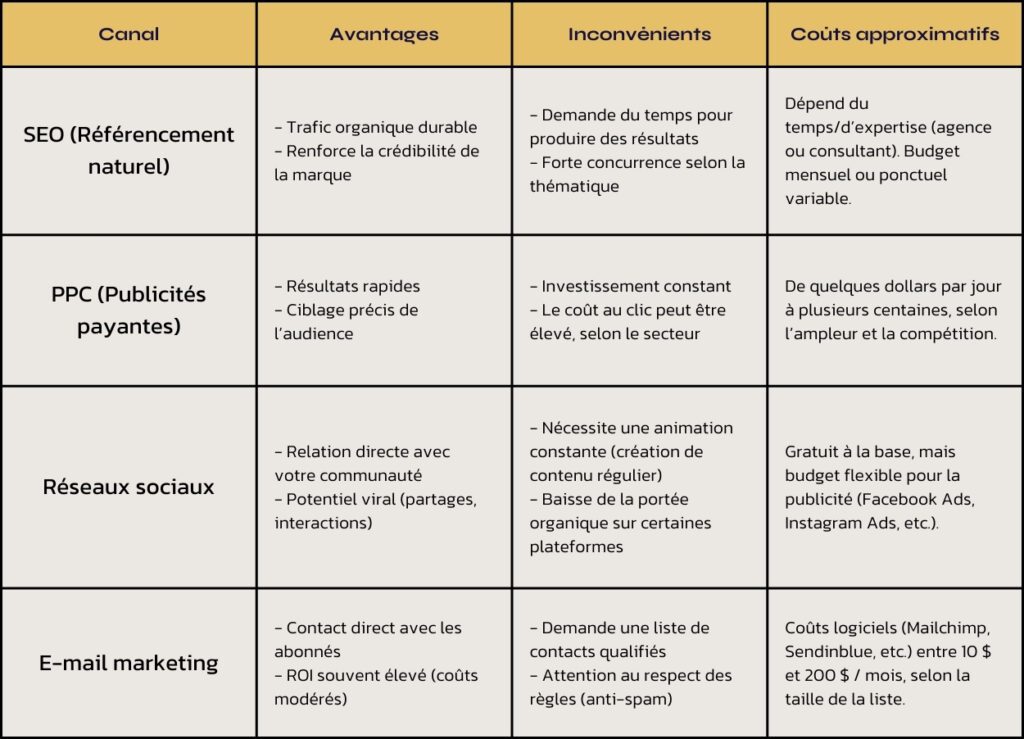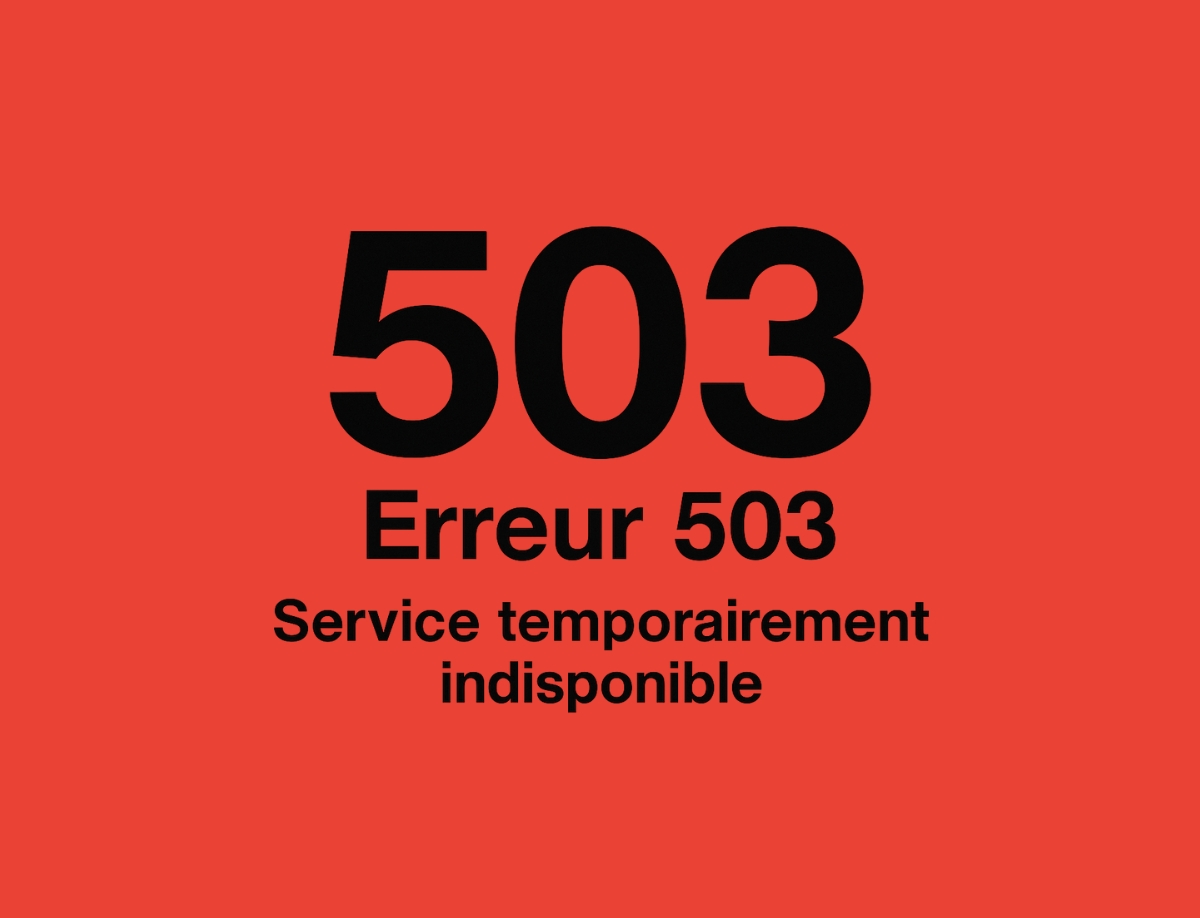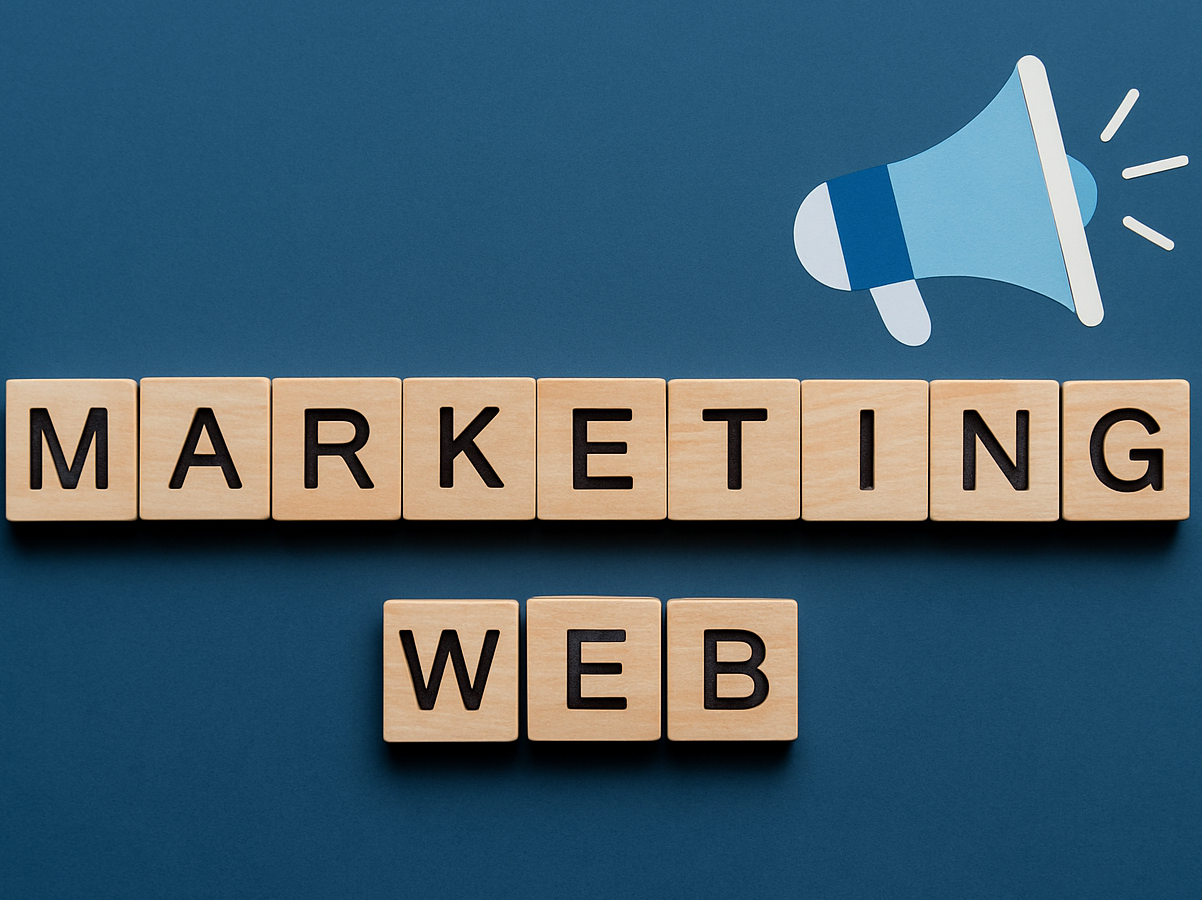Today, many companies are looking for ways to stand out online. This is precisely where the digital marketing. It's an essential lever for building brand awareness, generating qualified leads and, above all, boosting sales. Yet many people still wonder: what is digital marketing, and how do you put it into practice?
In this article, we will define the digital marketingexplain why a marketing strategy is essential, and then detail the key steps to ensure your success. digital strategy. We'll also look at how to measure your results so you can optimize your actions on an ongoing basis.
1. Digital marketing: definition and challenges
1.1 Digital marketing definition
Above all, the digital marketing definition refers to all communication, promotion and sales actions carried out on digital channels. More specifically, this includes :
- Natural search engine optimization (SEO)
- Online advertising (PPC)
- Social networks
- E-mail marketing
- Video or display campaigns
- Mobile applications
In other words, digital marketing encompasses all marketing interactions on the web. Thus, a digital marketing company can use these channels to reach its target audience more easily, maintain links with prospects and increase its overall visibility.
1.2 Why digital marketing?
On the one hand, adopting a corporate digital marketing allows you to boost your online presence exponentially. What's more, you benefit from measurement tools that give you precise visibility of your return on investment.
- Enhanced visibility You're easier for potential customers to spot.
- Precise targeting You target specific audience segments based on demographic or behavioral criteria.
- Performance measurement Platforms such as Google Analytics or Facebook Insights help you calculate the performance of your campaigns.
As a result, digital marketing is a highly effective way of improving your brand image and boosting sales.
2. What is a digital marketing strategy?
2.1 Defining a marketing strategy
Before moving on to techniques, it's crucial to understand that a digital marketing strategy is a detailed plan. Specifically, this plan serves to achieve defined marketing objectives via a selection of digital channels. Typically, it includes :
- A precise analysis of the company's situation (strengths, weaknesses, opportunities, threats).
- A list of clearly defined marketing objectives (increase sales, raise brand awareness, etc.).
- A deep understanding of the target audience (habits, interests, buying patterns).
- An action plan for deploying and measuring Web marketing campaigns.
In addition, it is essential that the digital marketing strategy remains adaptable. The market and technology evolve rapidly, so you need to adjust your plan continuously.
2.2 The stages of a digital strategy
To design a solid strategy, you can follow several successive steps:
- Define your goals For example, would you like to increase traffic, improve sales or build customer loyalty?
- Study the competition: Observe their practices to identify your gaps and opportunities.
- Selecting the right channels : This can range from SEO to online advertising and social networks.
- Drawing up a timetable Plan every marketing action to keep an eye on progress.
- Setting up KPIs Calculate, among other things, your conversion rate, your organic traffic and your average shopping basket.
- Analyze and adjust Don't forget to revise your approach on a regular basis, depending on the results obtained.
3. Why is a digital marketing strategy essential?
3.1 Benefits for your company
First of all, a digital communication strategy offers several major benefits:
- Coherence All your messages and channels are harmonized.
- Efficiency You identify priorities and allocate resources methodically.
- Credibility Customers perceive increased professionalism thanks to a consistent brand image.
What's more, by making targeted investments in your marketing strategyIn this way, you can maximize your return on investment. You'll also avoid wasting time on actions that have no real impact.
3.2 Risks of acting without a strategy
Conversely, if you launch campaigns haphazardly, you run the risk of wasting time and money. Without clear objectives and indicators, it's hard to know what's working and what's not. As a result, you could miss out on great expansion opportunities or even tarnish your brand image.
4. How to set up a sample marketing strategy?
4.1 The pillars of a successful digital strategy
To build a digital strategy Keep several things in mind:
- Segment your audience Determine who your different types of customers are.
- Create relevant content For example, write blog posts or newsletters that answer your readers' questions.
- Optimize your referencing Focus on targeted keywords such as what is digital marketing, digital marketing or marketing technique.
- Exploiting social networks Select the platform(s) where your audience is most active.
- Analyze your performance : Monitor statistics regularly to adjust your web strategy over time.
4.2 Case study: Launching a startup
Consider the example of a start-up specializing in organic food. It can :
- Launch a blog to explain what is digital marketing in the food sector and attract curious readers.
- Set up an advertising campaign on Instagram to promote new products.
- Collect emails with a free guide to healthy eating, then send targeted offers.
- Forge partnerships with influencers interested in organic cooking to boost credibility.
5. Marketing techniques you need to know
5.1 Search engine optimization (SEO)
First of all, optimizing your site for search engines is essential. You need to work on your keywords, your content and the technical structure of your pages. In this way, you'll increase your visibility and attract long-term natural traffic.
5.2 Paid advertising (SEM)
Then think about ads Google Ads or Facebook Ads. With effective targeting, you reach a specific audience (age, region, interests). This approach can be particularly profitable, provided you keep your budgets and bids under control.
5.3 Email marketing
Segmented e-mail automation allows you to maintain an ongoing link with your subscribers. You can broadcast special offers, new blog posts or surveys. By doing so, you nurture your community and increase your chances of conversion.
5.4 Social media marketing
Finally, don't forget that social networks play a key role in animating your community. Create engaging content, interact with your audience and launch contests to raise your profile.

6. Measure and adjust your digital marketing strategy
6.1 Performance indicators
To track the effectiveness of your initiatives, monitor the following indicators:
- Click-through rate (CTR) Calculates whether your ads or e-mails generate interest.
- Conversion rates Measuring how many visitors become customers or leads.
- Medium basket Evaluate the average amount spent by your buyers.
- Organic traffic Determines whether your SEO actions are bearing fruit.
Thanks to this data, you can quickly identify your strengths and areas for improvement.
6.2 Continuous optimization
As results come in, you need to review your tactics. Visit digital marketing requires a dynamic approach: you test, analyze and optimize. This is the only way to stay competitive.
8. Conclusion: Take action
All in all, the digital marketing is a powerful tool for increasing a company's online visibility and generating growth opportunities. By developing a digital marketing strategy With a consistent approach, you give yourself the means to attract a qualified audience, build customer loyalty and secure the future of your business.
In addition, a digital marketing company can be an invaluable asset if you're looking for tailor-made support. In any case, never forget to monitor your results and adjust your plans accordingly. That way, you'll maximize the return on your efforts.
Ready to take the plunge and develop a digital communication strategy strong? Contact The Webix now for professional support. Let's build the web strategy that will take your business to new heights.








